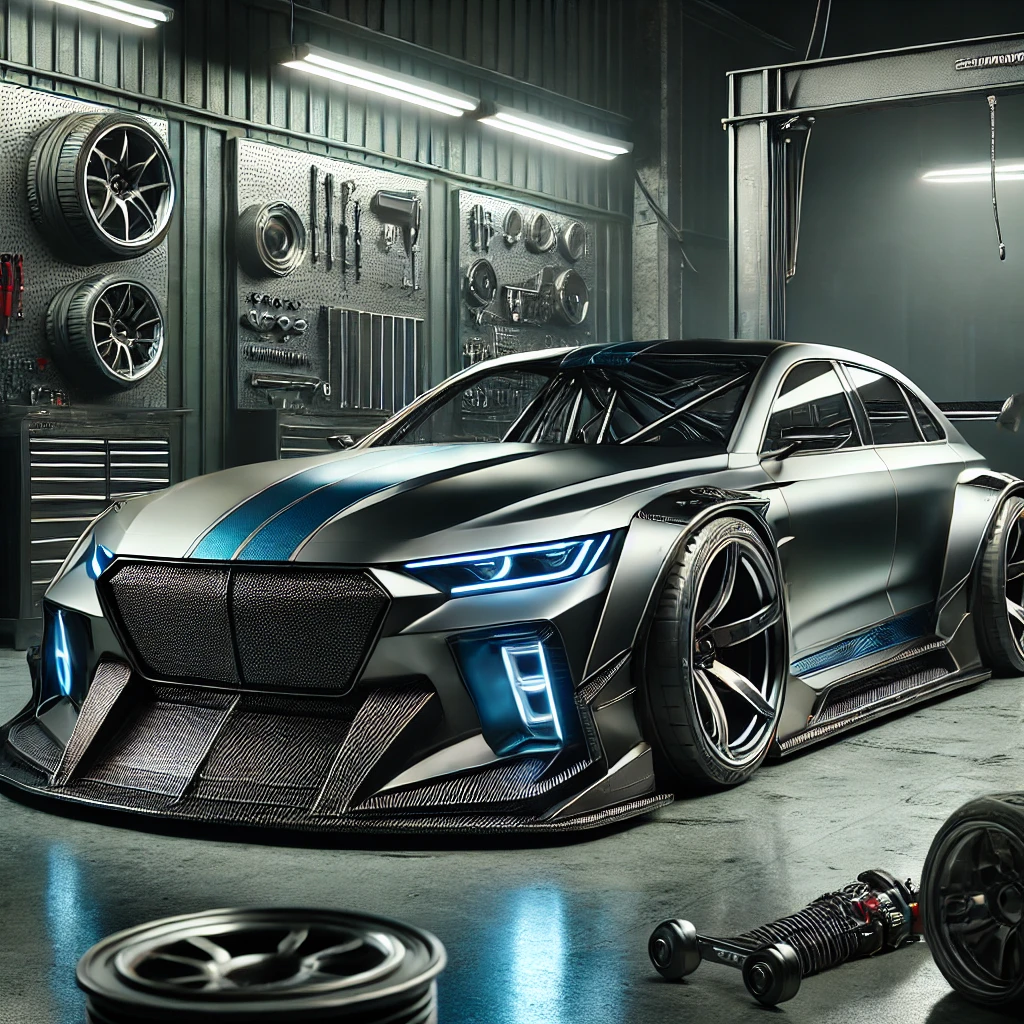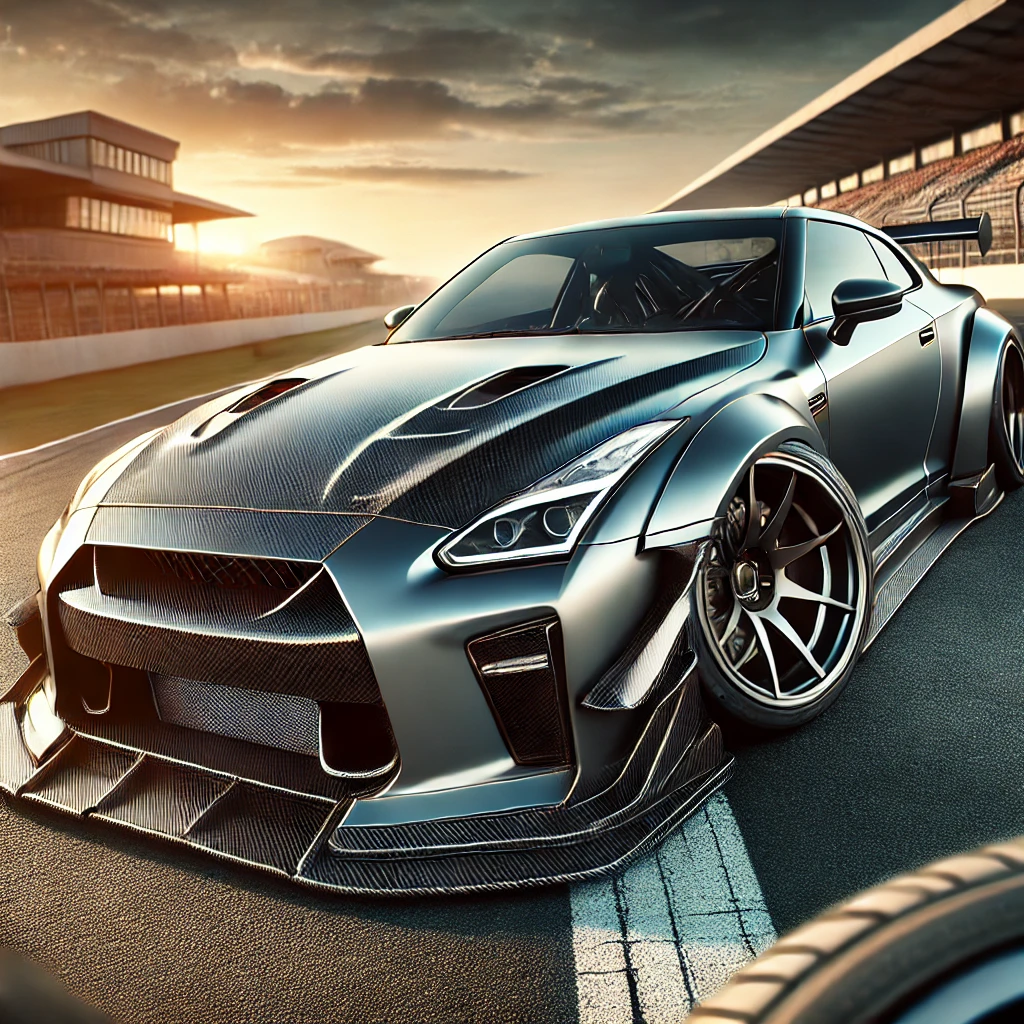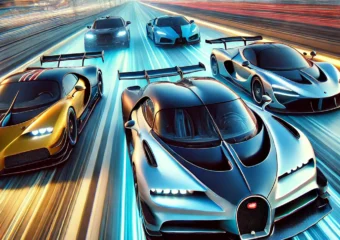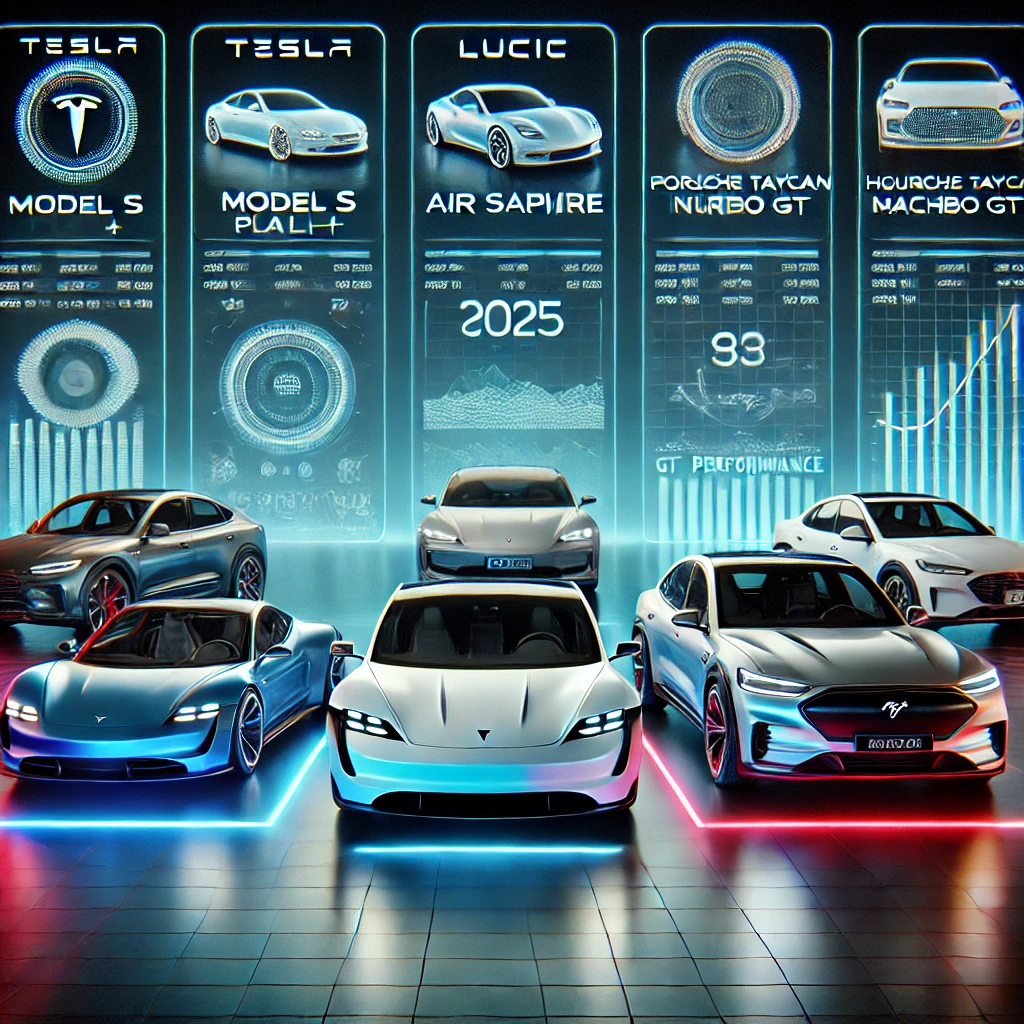
In recent years, the world of car modifications has seen an incredible surge in innovation and creativity. Car enthusiasts across the globe have been pushing boundaries, blending cutting-edge technology with timeless aesthetics. As we delve into the most popular car modifications of 2024, it becomes clear that these enhancements aren’t just about turning heads—they’re about transforming the driving experience itself. Whether you’re chasing performance gains, eye-catching design elements, or a perfect blend of both, 2024 offers an array of modifications that cater to every automotive passion.
A New Era of Performance Upgrades

Performance upgrades have always been a driving force behind car modifications, but in recent years, the automotive aftermarket has entered a new era of innovation and sophistication. Gone are the days when upgrading a car’s performance meant simple mechanical tweaks and bolt-on parts. Today, car enthusiasts have access to cutting-edge technology, advanced materials, and a wealth of data-driven tuning options that push the boundaries of what’s possible. This new era is defined by a relentless pursuit of power, precision, and efficiency—all while maintaining or even enhancing reliability.
The Evolution of Engine Tuning
Modern engine tuning has evolved far beyond traditional methods. In the past, performance gains often came from mechanical modifications such as carburetor adjustments, camshaft upgrades, or exhaust changes. While these techniques laid the groundwork, the introduction of electronic fuel injection and engine management systems revolutionized tuning possibilities.
In today’s market, ECU (Engine Control Unit) tuning stands at the forefront. Tuners utilize advanced software to adjust parameters such as ignition timing, air-to-fuel ratios, turbo boost levels, and throttle response. These precise adjustments allow for significant horsepower and torque gains without the need for extensive mechanical alterations. What’s more, manufacturers have developed sophisticated diagnostic tools that help tuners ensure that modifications remain within safe operating limits, protecting both the engine and the drivetrain.
As a result, engine tuning has become more accessible and reliable than ever. Car owners no longer need to rely solely on trial-and-error methods; instead, they benefit from data-driven optimization that delivers consistent, measurable improvements.
The Rise of Hybrid and Electric Performance Upgrades
While internal combustion engines continue to dominate the performance scene, the rise of hybrid and electric vehicles (EVs) has opened up new frontiers in performance tuning. Hybrids and EVs offer unique challenges and opportunities, as their powertrains rely on both mechanical and electrical components.
For hybrids, tuning efforts often focus on optimizing the interaction between the internal combustion engine and the electric motor. By refining the software that manages energy flow, tuners can improve acceleration, enhance fuel efficiency, and deliver a more responsive driving experience. Additionally, upgrades to the battery management system (BMS) can extend battery life and increase the electric motor’s output.
In the realm of fully electric vehicles, performance enhancements are largely software-driven. Some tuners specialize in adjusting inverter settings, optimizing cooling systems, and unlocking higher power levels from electric motors. These changes not only boost performance but also help maintain consistent power delivery during extended periods of spirited driving. The result is a more engaging driving experience that rivals traditional high-performance vehicles.
Forced Induction Innovations
Forced induction—through turbocharging and supercharging—has long been a cornerstone of performance tuning. However, recent advancements in forced induction technology have ushered in a new era of efficiency and responsiveness. Modern turbochargers feature advanced materials, improved aerodynamics, and variable geometry designs that reduce lag and deliver power more smoothly.
Electric superchargers represent another groundbreaking innovation. Unlike traditional belt-driven superchargers, electric superchargers rely on electric motors to provide instant boost. This technology eliminates the lag often associated with turbos and the parasitic drag of conventional superchargers. The result is a more linear powerband, improved throttle response, and increased fuel efficiency.
For enthusiasts looking to extract maximum performance, hybrid turbo systems that combine traditional exhaust-driven turbos with electric compressors are gaining popularity. These systems offer the best of both worlds: high-end power and immediate low-end torque.
Lightweight Components and Advanced Materials
In the quest for performance, reducing weight has become a key focus. Lighter cars accelerate faster, handle more nimbly, and stop more efficiently. The use of advanced materials—such as carbon fiber, aluminum alloys, and high-strength steel—has transformed the way performance parts are designed and manufactured.
Carbon fiber, once reserved for exotic supercars, is now widely available for a range of applications. From body panels and aerodynamic components to driveshafts and suspension parts, carbon fiber reduces unsprung weight and improves overall vehicle dynamics. Similarly, forged aluminum wheels, lightweight brake components, and hollow anti-roll bars contribute to a more agile driving experience.
In addition to traditional materials, new composites and manufacturing techniques are emerging. For example, carbon-ceramic brake rotors offer superior heat resistance and fade-free performance on track days. Advanced casting and forging processes allow for the creation of stronger yet lighter engine internals, enabling higher RPMs and greater durability under extreme conditions.
Advanced Suspension Systems
Performance isn’t just about raw power; it’s also about how a car handles on the road or track. Suspension upgrades have entered a new era of complexity and customization. Adjustable coilover systems allow drivers to fine-tune ride height, damping, and spring rates for their specific needs. This level of customization ensures that cars remain comfortable on the street while delivering razor-sharp handling on the track.
In recent years, electronically controlled suspension systems have gained popularity. These systems use sensors and adaptive dampers to adjust in real-time, optimizing the car’s balance and grip based on driving conditions. For enthusiasts, this means improved cornering performance, reduced body roll, and a more composed ride—whether navigating tight mountain roads or tackling high-speed corners on a race circuit.
Data-Driven Performance Tuning
Perhaps one of the most significant advancements in the world of performance upgrades is the use of data to guide tuning decisions. Dyno testing, data logging, and real-time telemetry provide tuners with a wealth of information about a car’s performance. This data-driven approach allows for more precise adjustments, ensuring that each modification contributes to the overall performance package.
Enthusiasts can now track parameters such as air intake temperatures, exhaust gas pressures, ignition timing, and fuel flow rates. By analyzing this data, tuners can identify bottlenecks, optimize airflow, and refine fueling strategies. The result is a more efficient and powerful engine that operates within safe limits.
Moreover, data-driven tuning is not limited to professional shops. With the advent of affordable data logging devices and user-friendly software, individual enthusiasts can monitor their car’s performance and make informed decisions about future upgrades. This democratization of performance tuning has made it more accessible to a wider audience, fueling a growing community of passionate car enthusiasts.
Looking Ahead: The Future of Performance Upgrades
The future of performance upgrades is filled with exciting possibilities. As automotive technology continues to evolve, so too will the methods and tools available to enthusiasts. From the integration of artificial intelligence and machine learning in tuning software to the development of next-generation materials and powertrain components, the performance landscape is poised to reach new heights.
In this new era of performance upgrades, enthusiasts are no longer limited by the constraints of traditional mechanical modifications. Instead, they have the freedom to explore a world of cutting-edge solutions that combine precision, reliability, and efficiency. By embracing these advancements, car owners can experience the thrill of driving a vehicle that performs at its peak—on the road, on the track, and beyond.**
Performance has always been at the heart of car modifications, and in 2024, the quest for power and precision reached new heights. Tuners, engineers, and manufacturers have introduced revolutionary parts and tuning methods that allow drivers to unlock their vehicles’ true potential.
1. Advanced ECU Tuning for Maximum Power
Electronic Control Unit (ECU) tuning has become increasingly sophisticated, enabling enthusiasts to fine-tune their engine parameters for optimal performance. Modern ECU tunes not only extract more horsepower and torque but also improve throttle response, fuel efficiency, and overall drivability. In 2024, tuners are utilizing advanced software tools that can precisely adjust air-to-fuel ratios, ignition timing, and boost pressure, ensuring that engines run at peak efficiency.
High-performance cars, such as the latest turbocharged models from European and Japanese automakers, are now capable of gains previously thought impossible without major hardware changes. The seamless integration of tuning software with OEM systems also means that owners can enjoy significant performance enhancements without sacrificing reliability or warranty coverage.
2. Hybrid and Electric Performance Enhancements
As the automotive industry shifts toward electrification, the aftermarket world is following suit. Hybrid and electric vehicles (EVs) are no longer limited to eco-conscious commuters—they’re now serious contenders in the performance world. In 2024, a growing number of companies are developing upgrades specifically for electrified platforms.
For instance, software tuning for EVs can unlock increased acceleration and higher top speeds. Some aftermarket firms are offering upgraded inverters and more efficient cooling systems, allowing electric motors to sustain higher power outputs for longer periods. Additionally, battery management system (BMS) enhancements are enabling better thermal control and reduced degradation, ensuring that performance-focused EV modifications don’t come at the expense of long-term reliability.
3. Turbocharger and Supercharger Innovations
Forced induction remains a cornerstone of performance tuning, and 2024 has introduced a new wave of turbocharger and supercharger technologies. Compact, high-efficiency turbochargers are becoming more common, allowing smaller engines to deliver big power without excessive lag. These “quick-spooling” turbos provide instant throttle response, making them ideal for both street and track applications.
Meanwhile, electric superchargers have gained traction. These systems eliminate the traditional belt-driven design in favor of electric motors, reducing parasitic drag and providing immediate boost. The result is a more linear power delivery, particularly at lower RPMs, giving drivers a more engaging and responsive driving experience.
4. Lightweight Components for Better Handling
Reducing weight is one of the most effective ways to improve a car’s performance. In 2024, lightweight components made from carbon fiber, aluminum, and advanced composites are more accessible than ever. From body panels and hoods to suspension arms and wheels, these materials significantly reduce unsprung weight, enhancing cornering stability, braking performance, and overall handling.
Track enthusiasts, in particular, have embraced lightweight modifications to gain precious seconds on lap times. The availability of custom-fit carbon fiber parts means that even daily drivers can benefit from weight reduction without compromising style or functionality.
5. Enhanced Exhaust Systems for Sound and Power
Exhaust systems remain a popular modification, not only for their performance benefits but also for the visceral sound they provide. In 2024, manufacturers are introducing more advanced exhaust designs, incorporating active valves and custom resonators that allow drivers to switch between quiet cruising and aggressive growls at the push of a button.
Additionally, the use of lightweight titanium and stainless steel materials helps reduce weight while maintaining durability. These exhaust systems improve exhaust flow, reduce backpressure, and contribute to horsepower gains, all while delivering a unique sound signature that reflects the driver’s personality.
6. Suspension Upgrades for Precision Handling
Performance isn’t just about straight-line speed—it’s also about how a car handles corners, brakes, and navigates challenging road conditions. In 2024, suspension upgrades have become more advanced, offering both performance gains and everyday comfort.
Adjustable coilover kits, for instance, allow drivers to fine-tune ride height, damping, and spring rates. This level of customization means that owners can achieve the perfect balance between performance and daily drivability. In addition, electronic dampers with smartphone control are gaining popularity, providing real-time adjustments based on driving conditions or driver preferences.
High-quality sway bars, bushings, and chassis braces also play a role in reducing body roll and improving stability. For enthusiasts who demand precision handling, these suspension enhancements deliver a more connected and responsive driving experience.
7. Performance Brakes for Stopping Power
With greater power and speed comes the need for more effective braking systems. Performance brake upgrades have become increasingly refined in 2024, with advanced materials and innovative designs that ensure consistent stopping power.
Carbon-ceramic brake kits, once reserved for high-end sports cars, are now available to a wider range of vehicles. These brakes provide exceptional heat resistance, reducing fade during prolonged spirited driving or track sessions. Paired with performance brake pads and stainless steel lines, these systems offer unparalleled braking performance and reliability.
Moreover, many aftermarket brake manufacturers are focusing on noise reduction and enhanced modulation, allowing drivers to have precise control over their braking force. This not only improves safety but also adds confidence behind the wheel.
Blending Performance and Style: The Visual Impact

Blending performance and style in car modifications is an art form that extends beyond raw horsepower and handling prowess. In the automotive world, aesthetics are a crucial element that transforms a vehicle from a simple mode of transportation into a personal statement. By carefully balancing these two aspects—performance enhancements and visual upgrades—car enthusiasts can create a machine that not only performs exceptionally well but also turns heads wherever it goes.
The Role of Aesthetics in Automotive Identity
A car’s visual appeal is often the first thing people notice, making it a key factor in the overall driving experience. The exterior design, color, stance, and detailing are all elements that reflect the owner’s personality, preferences, and creativity. When executed well, visual modifications become more than just a cosmetic change; they tell a story. For many car enthusiasts, the appearance of their vehicle is as important as its performance capabilities, creating a unique harmony that captures attention and admiration.
The Evolution of Styling Trends
Over the years, automotive styling trends have evolved significantly. In the past, modifications often focused on simple bolt-ons like aftermarket grilles, hood scoops, or chrome accents. Today, the landscape is more diverse and sophisticated, with enthusiasts embracing cutting-edge materials, innovative design techniques, and influences from global car cultures. Modern car styling incorporates sleek aerodynamic components, wide-body kits, custom lighting, and eye-catching paint schemes that push the boundaries of creativity.
Paint and Finishes: Making a Statement
One of the most impactful ways to blend performance and style is through unique paint finishes and custom wraps. Paint options have expanded far beyond traditional solid colors. Enthusiasts now have access to matte, satin, pearl, metallic, and even color-shifting finishes that transform a vehicle’s appearance under different lighting conditions. In addition to custom paint, vinyl wraps have become a popular alternative, offering endless possibilities for patterns, graphics, and textures. These visual enhancements not only make a car stand out but also protect its original paint, preserving the vehicle’s value.
Aerodynamic Upgrades: Form Meets Function
While aesthetics play a major role, performance and style often overlap in the form of aerodynamic upgrades. Front splitters, rear diffusers, side skirts, and rear wings are designed to improve downforce and stability at high speeds. However, these components also serve as prominent visual elements that enhance the car’s overall look. When integrated seamlessly, aerodynamic modifications create a cohesive appearance that conveys both aggression and sophistication.
Lighting Enhancements: Modernizing the Look
Lighting technology has come a long way, allowing car owners to modernize their vehicles with advanced headlight and taillight designs. LED and laser lighting systems not only improve visibility and safety but also contribute to the car’s aesthetic appeal. Sequential turn signals, custom daytime running lights, and color-changing LED strips provide a contemporary, high-tech look. By upgrading the lighting, enthusiasts can transform the vehicle’s front and rear profiles, giving it a distinctive, futuristic identity.
Interior Customization: Personalizing the Cabin
The interior of a car is where performance meets comfort and style. Interior modifications have become increasingly popular, with owners choosing high-quality materials, custom upholstery, and advanced technology. Carbon fiber trim, Alcantara accents, and custom-stitched leather seats elevate the interior ambiance, making the cabin as visually appealing as the exterior. Enhanced infotainment systems, digital instrument clusters, and ambient lighting allow for a personalized driving environment, ensuring that style and functionality coexist.
The Influence of Global Car Cultures
Car styling is a global phenomenon, with different regions contributing unique aesthetic trends. Japanese tuner culture, for instance, has brought wide-body kits, aggressive aero parts, and vibrant graphics into the mainstream. European design emphasizes clean lines, minimalist aesthetics, and factory-like fit and finish. Meanwhile, American car culture often embraces bold colors, oversized wheels, and muscular styling cues. By drawing inspiration from these diverse influences, enthusiasts can blend performance and style into a unified, internationally inspired vision.
Balancing Performance and Style
Ultimately, blending performance and style requires a thoughtful approach. A visually stunning car that lacks performance may not satisfy the driving enthusiast, just as a high-performance vehicle with a plain, uninspiring exterior might not capture the attention it deserves. The key is to strike a balance where both elements complement each other. Each modification—whether it’s a new set of lightweight wheels, a custom paint job, or a revised suspension setup—should enhance both the vehicle’s capabilities and its visual impact.
By carefully selecting and combining modifications, car enthusiasts can create a machine that embodies their passion, creativity, and dedication to automotive excellence. In the end, the perfect blend of performance and style is what transforms a car into a truly memorable and inspiring creation, ensuring that it stands out both on the road and in the hearts of those who admire it.**
While performance modifications often take center stage, the visual appeal of a well-modified car is equally important to many enthusiasts. In 2024, style and aesthetics have evolved to reflect modern tastes and cutting-edge design trends.
1. Aerodynamic Enhancements
Aerodynamic upgrades are no longer just about improving downforce—they’re about creating a cohesive and striking visual package. Custom front splitters, side skirts, rear diffusers, and functional rear wings are now designed to integrate seamlessly with a car’s original lines, enhancing both form and function.
These aerodynamic parts not only improve high-speed stability but also contribute to the car’s overall look. Carbon fiber and matte finishes are popular choices, giving vehicles a sophisticated, performance-oriented appearance.
2. Lighting Upgrades for Modern Appeal
Lighting technology continues to advance, and 2024 has brought more options for LED and laser headlights, as well as custom taillight designs. These upgrades not only enhance visibility and safety but also add a modern, high-tech look to any vehicle.
Daytime running lights (DRLs), sequential turn signals, and color-changing accent lighting have become staples for car enthusiasts seeking to stand out. With the rise of plug-and-play kits and smartphone-controlled systems, adding unique lighting features has never been easier.
3. Unique Paint Finishes and Wraps
Custom paint jobs and vehicle wraps have reached new levels of creativity in 2024. Enthusiasts are exploring multi-layered finishes, color-shifting hues, and textured wraps that give their cars a truly one-of-a-kind appearance.
Matte, satin, and pearl finishes remain popular, while bold graphics and intricate patterns allow owners to express their individual style. The use of ceramic coatings and protective films ensures that these eye-catching finishes stay looking pristine for years to come.
4. Wheel and Tire Combinations
Wheels are one of the most visible and impactful upgrades, and 2024 has seen a resurgence in unique wheel designs and finishes. Lightweight forged wheels, custom-painted spokes, and polished lips are all part of the trend. Enthusiasts are opting for larger, more aggressive fitments that fill the wheel arches and create a striking stance.
Paired with performance-oriented tires, these wheel upgrades not only improve grip and handling but also elevate the overall aesthetic of the vehicle. The combination of style and function is what makes wheels such a vital component of any car modification project.
5. Interior Customization for Personal Touches
The interior of a modified car is where drivers spend the most time, and 2024 has brought new trends in interior customization. From custom leather or Alcantara upholstery to carbon fiber trim panels and ambient lighting, interior modifications reflect the owner’s personal taste and style.
Upgraded infotainment systems, digital gauge clusters, and premium audio setups ensure that the driving experience is not only more enjoyable but also more connected. The emphasis on high-quality materials and craftsmanship transforms the cabin into a space that’s as impressive as the car’s exterior.
As we look back on the car modification trends of 2024, it’s clear that the automotive aftermarket continues to innovate and inspire. Enthusiasts today have access to a wealth of options that combine performance and style, allowing them to create truly unique vehicles that reflect their passion for driving. With the constant evolution of technology, materials, and design, the future of car modifications promises even more exciting possibilities for those who dare to dream big and build even bigger.


